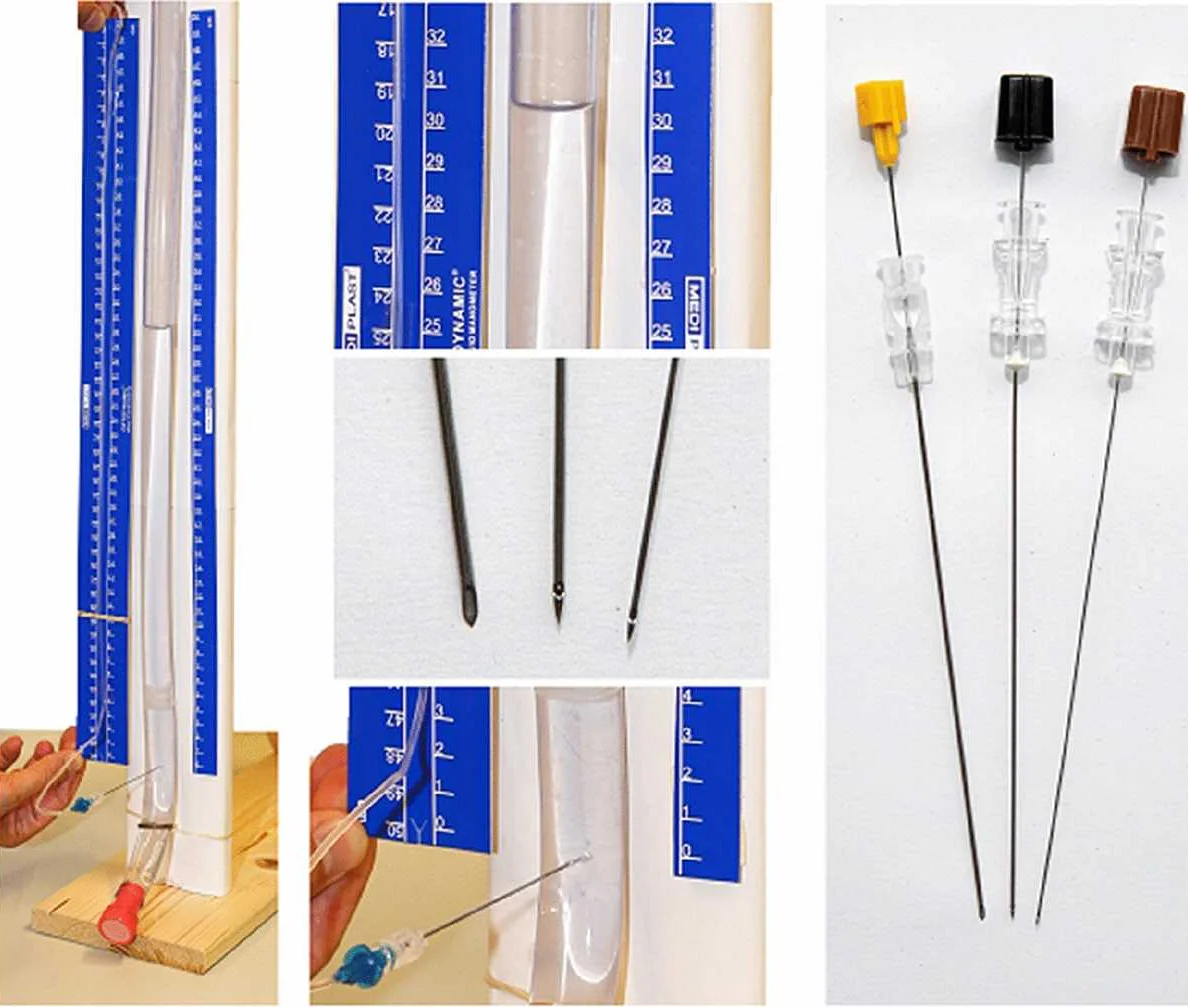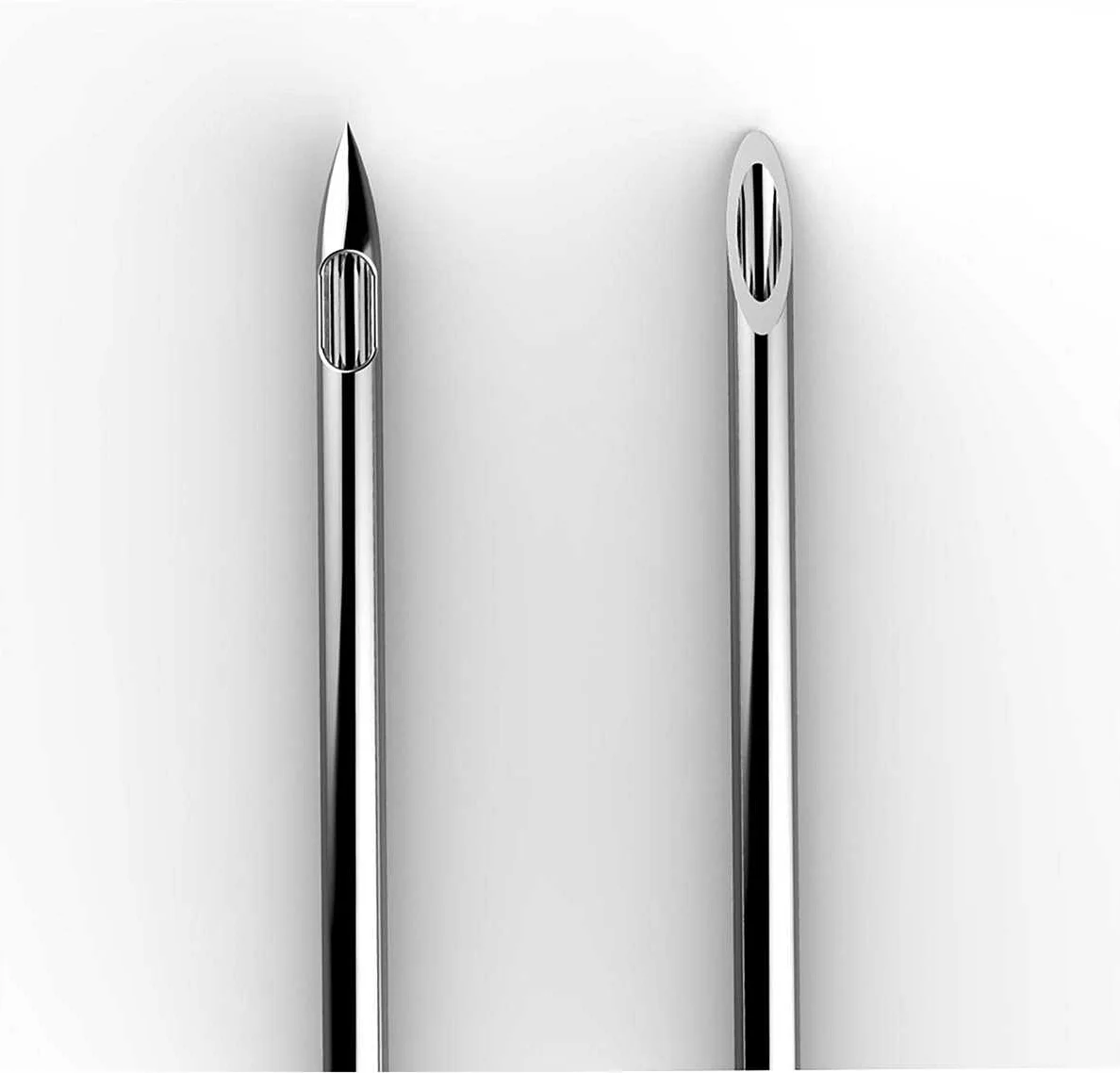Atraumatic Needle: Purpose, Features, Technical Requirements
Содержимое
Learn about the purpose, features, and technical requirements of atraumatic needles, which are designed to minimize tissue damage and discomfort during medical procedures. Find out how these specialized needles work and why they are beneficial for patients and healthcare professionals alike.
Medical procedures involving needle insertions can often cause discomfort and pain to patients. However, with the advent of atraumatic needles, this problem has been significantly reduced. Atraumatic needles are designed to minimize tissue damage and pain during penetration, making medical procedures more comfortable and less traumatic for patients. In this article, we will explore the purpose, features, and technical requirements of atraumatic needles, providing you with everything you need to know.
An atraumatic needle, also known as a sharp needle or a non-cutting needle, is specifically designed to reduce tissue trauma during insertion. Unlike conventional needles, atraumatic needles have a unique tip design that allows for smoother penetration without cutting or tearing tissues. This design minimizes pain, bleeding, and bruising, resulting in a more comfortable experience for patients.
The purpose of using atraumatic needles extends beyond patient comfort. These needles are particularly useful in delicate procedures where sensitive tissues or organs are involved, such as spinal taps, epidural anesthesia, and biopsy. By minimizing tissue trauma, atraumatic needles reduce the risk of complications, infections, and other adverse effects, ensuring a safer procedure and improved patient outcomes.
When it comes to the features of atraumatic needles, one of the key aspects is their sharpness. Although these needles are non-cutting, they must still be sharp enough to penetrate the tissues with minimal resistance. The tip of the needle is often beveled to allow for easier insertion, while the body of the needle may have a thin and flexible design to reduce the risk of tissue damage. Additionally, atraumatic needles come in various sizes and gauges to accommodate different medical procedures and patient populations.
The technical requirements for using atraumatic needles may vary depending on the specific procedure and healthcare setting. Healthcare professionals must receive proper training and education on the correct technique for inserting atraumatic needles to ensure optimal outcomes. Additionally, proper sterilization and disposal procedures must be followed to minimize the risk of infections and cross-contamination.
In conclusion, atraumatic needles play a vital role in minimizing tissue trauma, pain, and discomfort during medical procedures. Their unique design and features make them suitable for delicate procedures and improve patient outcomes. By understanding their purpose, features, and technical requirements, healthcare professionals can effectively incorporate atraumatic needles into their practice, providing safer and more comfortable experiences for their patients.
Purpose of Atraumatic Needle

An atraumatic needle is a specialized medical instrument designed to minimize tissue trauma and patient discomfort during procedures that require needle insertion. The primary purpose of an atraumatic needle is to reduce pain, bleeding, and the risk of complications associated with needle punctures.
Unlike conventional needles, which have a sharp bevel and cut through tissues as they penetrate, atraumatic needles are engineered with a blunt or rounded tip. This design allows the needle to separate and move aside tissue rather than cutting through it. As a result, atraumatic needles cause less tissue damage, reduce the risk of internal bleeding, and minimize the likelihood of nerve damage or hematoma formation.
Atraumatic needles are commonly used in a variety of medical procedures, including but not limited to:
- Spinal Tap: Atraumatic needles are often used to perform spinal taps, also known as lumbar punctures. By minimizing tissue trauma, atraumatic needles reduce the risk of post-procedure headaches and nerve damage.
- Epidural Anesthesia: Atraumatic needles are frequently employed to administer epidural anesthesia in childbirth or pain management scenarios. The blunted tip helps to prevent unintended dural puncture, reducing the risk of complications such as cerebrospinal fluid leakage.
- Bone Marrow Aspiration: Atraumatic needles are utilized in bone marrow aspiration procedures to obtain samples for diagnostic purposes. The gentle penetration of the needle reduces patient discomfort and minimizes injury to surrounding tissues.
- Biopsy: Atraumatic needles are commonly used in various types of biopsies, such as liver, kidney, and breast biopsies. The atraumatic design reduces the risk of tissue damage, hematoma formation, and pain during the procedure.
In summary, the purpose of an atraumatic needle is to improve patient comfort and safety during procedures that involve needle insertion. By minimizing tissue trauma and the associated complications, atraumatic needles contribute to more efficient and less painful medical interventions.
Benefits of Atraumatic Needle
The use of an atraumatic needle offers several benefits that make it a preferred choice in various medical procedures. Here are some of the key advantages:
- Reduced Pain: Atraumatic needles are specifically designed to minimize pain during the insertion and removal process. The needle features a blunt or rounded tip that helps to minimize tissue damage and nerve stimulation, resulting in a more comfortable experience for the patient.
- Less Bruising and Hematomas: The atraumatic needle’s design ensures that there is less trauma to the surrounding tissues, reducing the risk of bruising and hematomas. This is particularly beneficial in patients with fragile or sensitive skin.
- Decreased Risk of Nerve Injury: The atraumatic needle’s rounded tip helps to minimize the chances of nerve injury during procedures such as nerve blocks or epidurals. The smooth and gentle insertion technique reduces the likelihood of accidentally hitting a nerve, enhancing patient safety.
- Improved Cosmetic Outcome: The atraumatic needle’s gentle and less invasive design contributes to better cosmetic outcomes, especially in procedures where visible puncture marks are a concern. The reduced tissue trauma and minimal scarring result in a more aesthetically pleasing result.
- Enhanced Patient Satisfaction: Due to its ability to reduce pain, minimize bruising, and improve cosmetic outcomes, the use of an atraumatic needle significantly enhances patient satisfaction. Patients are more likely to have a positive experience and may feel more comfortable seeking future medical care.
These benefits make atraumatic needles a valuable tool in various medical specialties, including anesthesia, pediatrics, and dermatology. By choosing an atraumatic needle, healthcare providers can improve patient comfort and safety, ultimately leading to better overall outcomes.
Features of Atraumatic Needle

Atraumatic needles are designed with specific features that make them different from conventional needles. These features include:
- Blunt tip: Atraumatic needles have a blunt tip compared to sharp-tip needles. The absence of a sharp cutting edge reduces tissue damage and minimizes the risk of piercing blood vessels or nerves.
- Rounded body: The body of an atraumatic needle is rounded, which helps to spread the force distributed during needle insertion. This design prevents tissue trauma and reduces the probability of post-procedural pain.
- Side ports: Atraumatic needles often have side ports or multiple openings on the sides of the needle. These ports allow for the controlled release of medication or fluids, reducing the risk of tissue damage and enhancing drug distribution.
- Flexible shaft: Atraumatic needles typically have a flexible shaft, which allows for easier maneuverability and reduces the risk of bending or breaking during insertion. The flexibility of the needle also enhances patient comfort.
- Smooth surface: Atraumatic needles have a smooth surface, which facilitates smooth insertion and minimizes friction between the needle and the tissues. This feature reduces pain and discomfort for the patient.
These features of atraumatic needles make them especially suitable for procedures where minimal tissue trauma, reduced pain, and enhanced patient comfort are important considerations.
Design of Atraumatic Needle
An atraumatic needle is specially designed to minimize tissue damage and reduce patient discomfort during medical procedures. Its unique design features help in achieving these objectives. The design of an atraumatic needle typically includes the following components:
| Cannula | The cannula is the hollow tube of the needle through which fluids or medications are injected or withdrawn. In an atraumatic needle, the cannula is designed to have a thin wall and a beveled tip. The thin wall reduces the size of the puncture wound, while the beveled tip allows for smoother entry into the tissue. |
| Hub | The hub is the part of the needle that attaches to the syringe or other device. In an atraumatic needle, the hub is typically made of a soft, transparent material that allows for better visibility of the fluid in the syringe. |
| Wings | Some atraumatic needles feature wings on the hub, which provide a better grip for the healthcare provider during insertion and removal of the needle. |
| Guard | An atraumatic needle may have a guard that covers the beveled tip when the needle is not in use. The guard helps prevent accidental needlestick injuries and protects the integrity of the needle. |
The design of the atraumatic needle is crucial in ensuring patient comfort and safety during medical procedures. The thin-walled cannula and beveled tip minimize tissue trauma, while the soft hub and wings improve ease of use for healthcare providers. The inclusion of a guard adds an extra layer of protection for both patients and healthcare workers. Overall, the design of the atraumatic needle plays a significant role in enhancing the overall experience and outcomes of medical procedures.